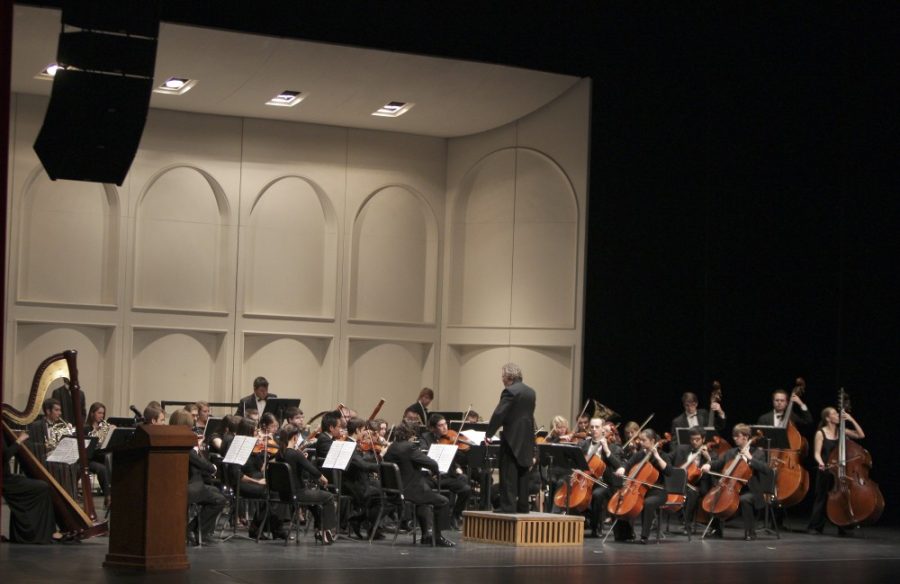A theatrical and creative re-enactment based on the first 100 years of Arizona’s history was held in Centennial Hall on Saturday in celebration of Arizona’s 100th year of statehood.
The event, “Arizona 100: A Celebration Through the Lens of Time,” was hosted by the College of Letters, Arts and Science with the UA’s Confluence: A Center for Creative Inquiry, and presented a look at Arizona’s history from a variety of disciplines, including anthropology, music, poetry, dance, tree-ring research and astronomy.
“What’s Arizona going to be like 100 years from now? What will it be like in 1,300 years?” asked John Olsen, a regents’
professor in anthropology, at the event. Olsen described anthropology and archaeology in Arizona over the last century.
More than 1,000 people viewed the Arizona Centennial Project. The project, sponsored by the Louis and Marjory Slavin Fine Arts Endowment and Confluence: Center for Creative Inquiry, consists of short films available through an app that offers a look at “the campus of yesterday.” Users could watch video segments that combined archival material with actors in period costumes.
The program allowed professors from various departments within the College of Letters, Arts and Science to offer different points of view about Arizona’s journey that were unique to their fields of study. Jacqueline Mok, provost and senior vice president for Academic Affairs, said that the university’s job was to bring perspectives through voice, sight and science.
Thomas Sheridan, a research anthropologist, said many of Arizona’s original residents traveled west for Arizona’s climate. Many fell in love, he said, with “a beauty so foreign” to non-Arizona natives. Sheridan focused on water, power and climate change in 21st-century Arizona.
Lines from journal entries by Mamie Bier Bernard Aguirre, the first female professor at the UA, were re-enacted and speakers told of how her courage would eventually add to Arizona’s spirit of “bearing down” in the face of difficulties.
“I am a professional snoop,” said Department of Gender and Women’s Studies professor Judy Nolte Temple, adding that she reads women’s diaries to get fresh and contrasting perspectives on recorded history.
Aguirre fled the South after the Civil War with her husband, a Spanish trader, to travel the Santa Fe Trail before beginning her career as a teacher of “unruly” girls.
Richard Shelton, an emeritus regents’ professor of English, reflected on Arizona’s aesthetic value and its “secret ferocity.” Shelton read many poems in the desert, he said, and was attacked by dozens and dozens of plants.
“The Sonoran Desert has territorial plants,” he explained. “They protect their territory.”
In the presentation “Tales that Tree-Rings Tell,” Thomas Swetnam, director of the Laboratory of Tree-Ring Research, demonstrated how tree-rings provide an environmental diary of events. Small rings, he said, correspond to a dry year and allow researchers to determine what exactly it was like to live in Arizona during any given time period.
Christopher Impey, an astronomer in the Steward Observatory, reviewed the history of telescopes from Galileo’s original model to the Giant Magellan Telescope, a current UA project that will be bigger than Centennial Hall once completed, he said. Impey said time travel is always possible — all you have to do is look at the stars. Some of the light you’ll see from these stars, he said, has traveled about a century’s distance.
The take-home lesson, Olsen said, was that we should continue to keep our eye on the promise of the future.
“In closing,” he added, “I offer you the promise of living.”









